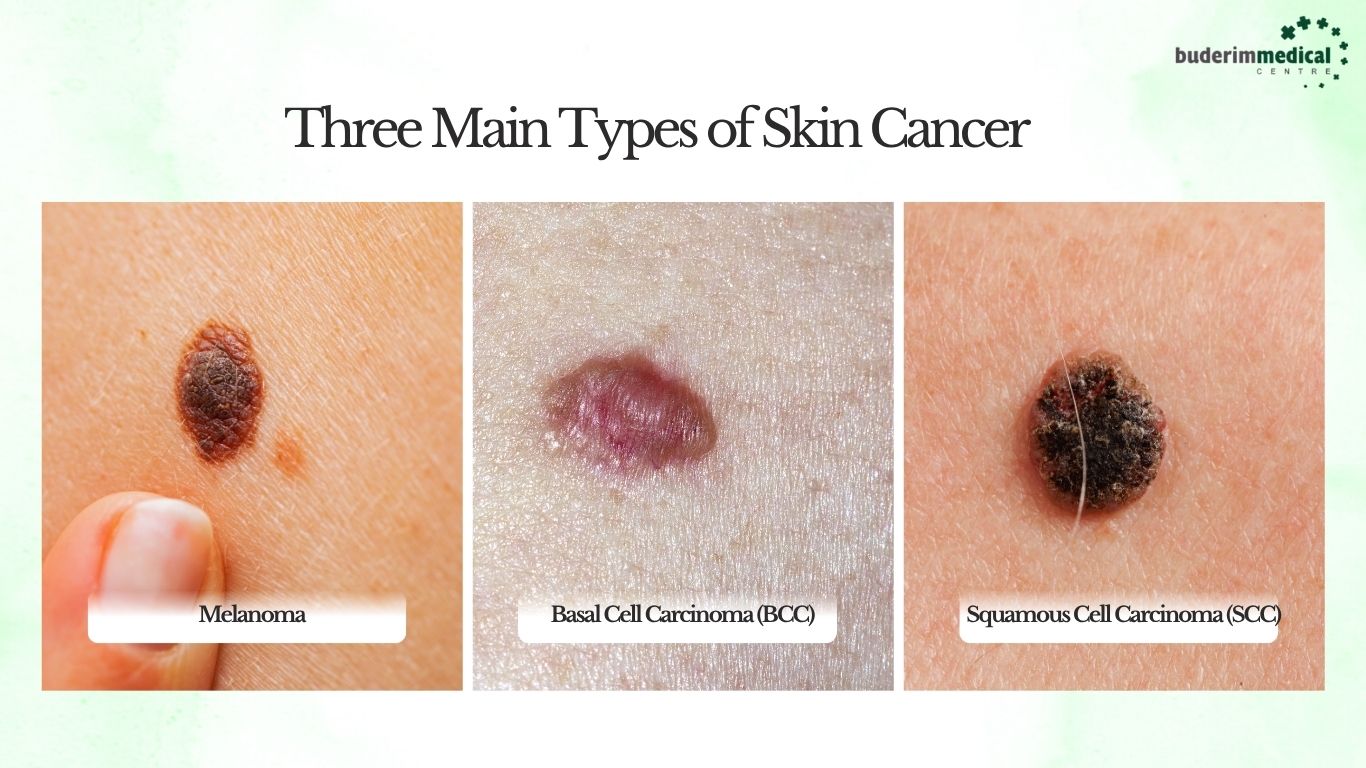Not All Skin Cancers Come from Moles: Spotting the Other Types

Australia has one of the highest rates of skin cancer in the world. While public awareness often focuses on melanoma and the importance of monitoring moles, it’s important to recognise that not all skin cancers begin in or near a mole. In fact, the majority of skin cancers diagnosed in Australia, basal cell carcinoma (BCC) and squamous cell carcinoma (SCC) typically develop on previously normal-looking skin, often in sun-exposed areas.
In this blog, we explore the types of skin cancer that do not arise from moles, their warning signs, and what you should know to detect and manage them early.
Do All Skin Cancers Start as Moles?
No, not all skin cancers originate from moles.
While melanoma may arise in an existing mole or present as a new pigmented lesion, BCC and SCC usually develop as new spots on sun-damaged skin. This is why relying solely on mole changes to detect skin cancer may lead to missed warning signs.

Melanoma
Melanoma develops from melanocytes, the cells responsible for pigment in the skin. While it’s the most dangerous form of skin cancer due to its potential to spread, it accounts for a smaller proportion of total skin cancer cases.
Basal Cell Carcinoma (BCC)
BCC is the most common form of skin cancer. It originates in the basal cells located in the lowest layer of the epidermis and is usually slow-growing. Though unlikely to spread, BCC can cause localised tissue damage if left untreated.
Squamous Cell Carcinoma (SCC)
SCC arises from squamous cells in the upper skin layers and can be more aggressive than BCC. It has a higher potential to spread if not detected early, particularly when found on high-risk areas like the lips, ears, or scalp.
How to Recognise Basal Cell Carcinoma (BCC)
BCC typically appears on sun-exposed areas such as the face, neck, shoulders, and back. Key signs include:
- A shiny, pearly bump or nodule
- A flat, pale patch with a waxy appearance
- A sore that doesn’t heal or keeps returning
- A raised area with visible blood vessels
- A pink or red area that may bleed or crust
Though BCC rarely spreads, it can grow into surrounding tissues over time.
How to Identify Squamous Cell Carcinoma (SCC)
SCC can occur on any area of skin but is most common on areas frequently exposed to the sun, such as the face, scalp, forearms, and backs of the hands. Warning signs include:
- A rough, scaly or crusted patch
- A firm, red nodule or raised growth
- A sore that doesn’t heal or bleeds easily
- A wart-like lesion with central ulceration
- Areas of skin that feel sore or tender to touch
SCC may grow more quickly than BCC and, if untreated, can metastasise.
Are BCC and SCC Dangerous?
While BCC grows slowly and rarely spreads, it can still lead to disfigurement if not treated early. SCC, on the other hand, poses a greater risk of spreading to lymph nodes or other parts of the body especially when diagnosed late.
Both types of skin cancer can be treated effectively when identified early, highlighting the importance of regular skin checks.
Common Misconceptions About Skin Cancer and Moles
- “Only moles can turn cancerous.”
False. While melanoma often involves moles, BCC and SCC develop from normal skin cells. - “If it’s not dark or changing, it’s not skin cancer.”
Not true. Many BCCs and SCCs are pink, flesh-toned, or translucent and may not change in obvious ways. - “Skin cancer only affects older people.”
Although risk increases with age, skin cancer can occur at any age especially with prolonged UV exposure.
Who Is at Risk of Non-Melanoma Skin Cancer?
You may be more likely to develop BCC or SCC if you:
- Have fair skin or light-coloured eyes and hair
- Have a history of frequent sun exposure or sunburns
- Spend a lot of time outdoors
- Are over the age of 50
- Have had skin cancer previously
- Use tanning beds or solariums
- Have a weakened immune system
When to Seek a Skin Check
Not all changes are obvious. If you notice any of the following, it’s worth having your skin checked by a qualified doctor:
- A new spot that looks or feels different from your other skin
- A sore or patch that doesn’t heal
- Spots that bleed, itch, or crust
- A persistent lump or thickened area
- Any lesion that changes over time
Early detection is key. A trained skin cancer GP can assess these areas using a dermatoscope and recommend a biopsy or treatment if needed.
Get Skin Check at Buderim Medical Centre
At Buderim Medical Centre, our experienced GPs provide thorough skin cancer checks in a caring and professional setting. We’re trained in detecting and managing all skin cancer types, including basal and squamous cell carcinoma, and offer on-site procedures when needed.
Regular checks are especially important if you’ve had high sun exposure or a personal or family history of skin cancer.
Remember, not all skin cancers start as moles. Recognising the signs early and acting on them can make all the difference. If you notice a new or changing spot, book a skin check with a qualified doctor.





